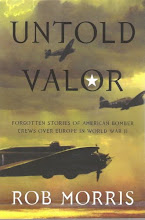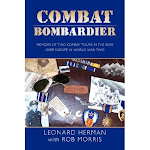
Ed Freeman... A True Hero'
(sent to me by my friend Jay Buckley, Vietnam Veteran)
You're an 18 or 19 year old kid. You're critically wounded, and dying in the jungle in the Ia Drang Valley, 11-14-1965. LZ Xray, Vietnam Your infantry unit is outnumbered 8 - 1, and the enemy fire is so intense, from 100 or 200 yards away, that your own Infantry Commander has ordered the MediVac helicopters to stop coming in. You're lying there, listening to the enemy machine guns, and you know you're not getting out. Your family is 1/2 way around the world, 12,000 miles away, and you'll never see them again. As the world starts to fade in and out, you know this is the day. Then, over the machine gun noise, you faintly hear that sound of a helicopter, and you look up to see an un-armed Huey, but it doesn't seem real, because no Medi-Vac markings are on it. Ed Freeman is coming for you. He's not Medi-Vac, so it's not his job, but he's flying his Huey down into the machine gun fire, after the Medi-Vacs were ordered not to come. He's coming anyway. And he drops it in, and sits there in the machine gun fire, as they load 2 or 3 of you on board. Then he flies you up and out through the gunfire, to the Doctors and Nurses. And, he kept coming back...... 13 more times..... and took about 30 of you and your buddies out, who would never have gotten out. Medal of Honor Recipient Ed Freeman died last Wednesday at the age of 80, in Boise , ID .....May God rest his soul..... (Oh yeah, Paul Newman died that day too. I guess you knew that -- He got a lot more press than Ed Freeman.)
Here is Ed's biography:
"ED W. FREEMANCaptain, U.S. Army Company A, 229th Assault Helicopter Battalion, 1st Cavalry Division (Airmobile)
By the time the Korean War broke out, Ed Freeman was a master sergeant in the Army Engineers, but he fought in Korea as an infantryman. He took part in the bloody battle of Pork Chop Hill and was given a battlefield commission, which had the added advantage of making him eligible to fly, a dream of his since childhood. But flight school turned him down because of his height: At six foot four, he was “too tall” (a nickname that followed him throughout his military career). In 1955, however, the height limit was raised, and Freeman was able to enroll. He began flying fixed-wing aircraft, then switched to helicopters. By 1965, when he was sent to Vietnam, he had thousands of hours’ flying time in choppers. He was assigned to the 1st Cavalry Division (Airmobile), second in command of a sixteen-helicopter unit responsible for carrying infantrymen into battle. On November 14, 1965, Freeman’s helicopters carried a battalion into the Ia Drang Valley for what became the first major confrontation between large forces of the American and North Vietnamese armies. Back at base, Freeman and the other pilots received word that the GIs they had dropped off were taking heavy casualties and running low on supplies. In fact, the fighting was so fierce that medevac helicopters refused to pick up the wounded. When the commander of the helicopter unit asked for volunteers to fly into the battle zone, Freeman alone stepped forward. He was joined by his commander, and the two of them began several hours of flights into the contested area. Because their small emergency-landing zone was just one hundred yards away from the heaviest fighting, their unarmed and lightly armored helicopters took several hits. In all, Freeman carried out fourteen separate rescue missions, bringing in water and ammunition to the besieged soldiers and taking back dozens of wounded, some of whom wouldn’t have survived if they hadn’t been evacuated. Freeman left Vietnam in 1966 and retired from the Army the following year. He flew helicopters another twenty years for the Department of the Interior, herding wild horses, fighting fires, and performing animal censuses. Then he retired altogether. In the aftermath of the Ia Drang battle, his commanding officer, wanting to recognize Freeman’s valor, proposed him for the Medal of Honor. But the two-year statute of limitations on these kinds of recommendations had passed, and no action was taken. Congress did away with that statute in 1995, and Freeman was finally awarded the medal by President George W. Bush on July 16, 2001. Freeman was back at the White House a few months later for the premiere of We Were Soldiers, a 2002 feature film that depicted his role in the Ia Drang battle. As he was filing out of the small White House theater, the president approached him, saluted, and shook his hand. “Good job, Too Tall,” he said.
By the time the Korean War broke out, Ed Freeman was a master sergeant in the Army Engineers, but he fought in Korea as an infantryman. He took part in the bloody battle of Pork Chop Hill and was given a battlefield commission, which had the added advantage of making him eligible to fly, a dream of his since childhood. But flight school turned him down because of his height: At six foot four, he was “too tall” (a nickname that followed him throughout his military career). In 1955, however, the height limit was raised, and Freeman was able to enroll. He began flying fixed-wing aircraft, then switched to helicopters. By 1965, when he was sent to Vietnam, he had thousands of hours’ flying time in choppers. He was assigned to the 1st Cavalry Division (Airmobile), second in command of a sixteen-helicopter unit responsible for carrying infantrymen into battle. On November 14, 1965, Freeman’s helicopters carried a battalion into the Ia Drang Valley for what became the first major confrontation between large forces of the American and North Vietnamese armies. Back at base, Freeman and the other pilots received word that the GIs they had dropped off were taking heavy casualties and running low on supplies. In fact, the fighting was so fierce that medevac helicopters refused to pick up the wounded. When the commander of the helicopter unit asked for volunteers to fly into the battle zone, Freeman alone stepped forward. He was joined by his commander, and the two of them began several hours of flights into the contested area. Because their small emergency-landing zone was just one hundred yards away from the heaviest fighting, their unarmed and lightly armored helicopters took several hits. In all, Freeman carried out fourteen separate rescue missions, bringing in water and ammunition to the besieged soldiers and taking back dozens of wounded, some of whom wouldn’t have survived if they hadn’t been evacuated. Freeman left Vietnam in 1966 and retired from the Army the following year. He flew helicopters another twenty years for the Department of the Interior, herding wild horses, fighting fires, and performing animal censuses. Then he retired altogether. In the aftermath of the Ia Drang battle, his commanding officer, wanting to recognize Freeman’s valor, proposed him for the Medal of Honor. But the two-year statute of limitations on these kinds of recommendations had passed, and no action was taken. Congress did away with that statute in 1995, and Freeman was finally awarded the medal by President George W. Bush on July 16, 2001. Freeman was back at the White House a few months later for the premiere of We Were Soldiers, a 2002 feature film that depicted his role in the Ia Drang battle. As he was filing out of the small White House theater, the president approached him, saluted, and shook his hand. “Good job, Too Tall,” he said.




















 Brad tends the bar, with a little help from fellow enlisted man Philip Mutton. His 'enforcer' hangs on the wall next to the window.
Brad tends the bar, with a little help from fellow enlisted man Philip Mutton. His 'enforcer' hangs on the wall next to the window.





